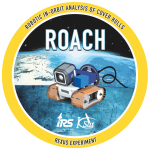FerrAS
FerrAS (Ferrofluid Application Study) is the continuation of Papell and looks at the usage of ferrofluids to find solutions for technical problems in space. FerrAS is our fourth experiment in the REXUS program.
FARGO
FerrAS (Ferrofluid Application Study) is the continuation of PAPELL and looks at the usage of ferrofluids to find solutions for technical problems in space. With various experiments we have applied in the Überflieger 2 programm to hopefully test in micro-gravity on the ISS.
MICU
MICU (Mineral Investigation Camera using Ultra-Violet) will use ultraviolet (UV) radiation to cause fluorescence of lunar rocks through LEDs, which we will then detect with a camera. The on-board image processor will analyse the images for possible fluorescence. Promising images will be released for downstream to Earth for advanced mineral classification.
BUBBLE
BUBBLE is our high altitude balloon program. We provide the bus system for the gondola to fly various payloads from KSat and external payloads. The launch and recovery is organized by us.
ROACH 2
ROACH 2 (Robotic in-Orbit Analysis of Cover Hulls 2) is our third experiment within the REXUS/BEXUS program of DLR and SNSA. It uses a new adhesion method to move on a surface in microgravity. Long-term goal: autonomous maintenance.
SOURCE
SOURCE (Stuttgart Operated University Research Cubesat for Evaluation and Education) is an 3 Unit CubeSat. Planned launch is in 2020. Next to technology demonstrations and earth observation, the satellite will make measurements of the earth atmosphere.
PAPELL
Pump Application using Pulsed Electromagnets for Liquid reLocation(PAPELL) is an experiment, which will test the basic functionality of pumps using ferrofluids.
ROACH
ROACH (Robotic in-Orbit Analysis of Cover Hulls) was our second experiment within the REXUS/BEXUS program. It used a new adhesion method to move along a surface in microgravity and vacuum. Long-term goal: autonomous maintenance.
MIRKA 2 ICV
MIRKA2-ICV (Mikrorückkehrkapsel 2 – In-flight Communication Verification) is a successor to MIRKA2-RX and attempted to gather further data on the satellite communication terminal aboard it.
CanSat Challenge
With the CanSat Challenge, we want to provide a fast and easy opportunity for new students to get introduced to space projects. They will be provided with a task and have the build volume of one 0.33l can to fullfill the challenge.
MIRKA 2 HyEnd
MIRKA2-HyEnD (Mikrorückkehrkapsel2-Hybrid Engine Development) was our second rocket-based high altitude experiment. It was a cooperation between HyEnD and KSat.
CAPE
The cubesat CAPE is based on a project by Priv.-Doz. Dr.-Ing. Georg Herdrich and Dr.-Ing. Jaime Esper within the topic of plasma in spaceflight („Raumfahrtrelevante Plasmen“), a cooperation between the Institut für Raumfahrtsysteme and NASA Goddard.
MIRKA 2 RX
MIRKA2-RX (MIkroRückkehrKapsel2-REXUS) was our first REXUS experiment. It sucessfully verified the ability of a small reentry capsule to orient itself and transmit data.
ESMO
ESMO (European Student Moon Orbiter) was the SSETI-program's third mission. Envisaged from the beginning, it only gained momentum following intesive work on SSETI Express and ESEO, eventually resulting in a feasability study in 2007.
ESEO
ESEO (European Student Earth Orbiter) is a planned small satellite developed by students all over Europe under guidance by ESA. It is to be an earth observatory.
SSETI Express
Many students participating in the SSETI program were on the verge of graduating in 2003. SSETI Express was created to convert their knowledge into a student satellite, as a proof of their ability and to actually test the developed systems














